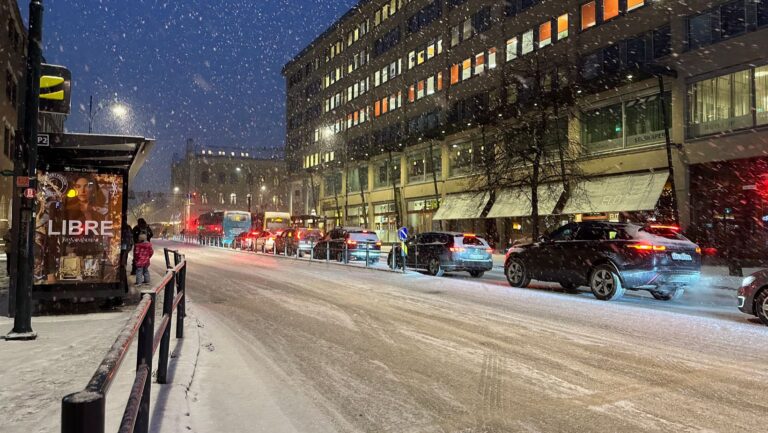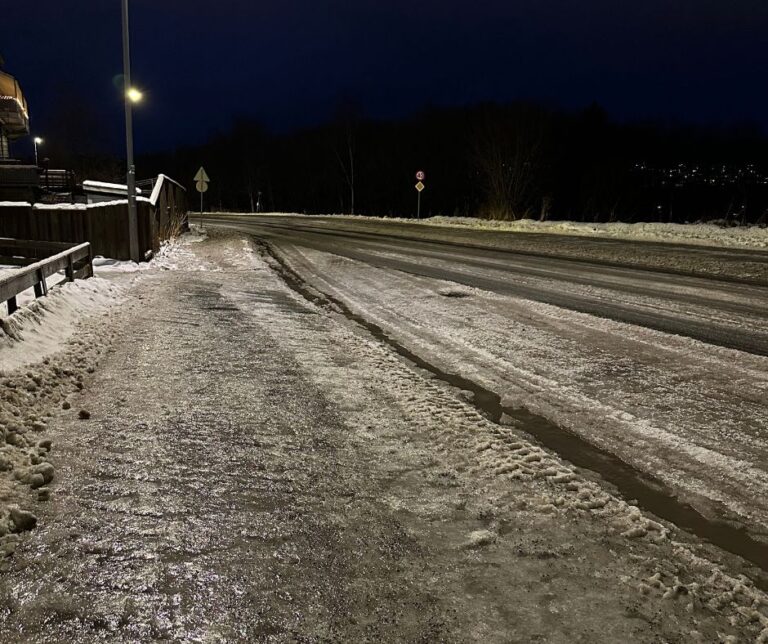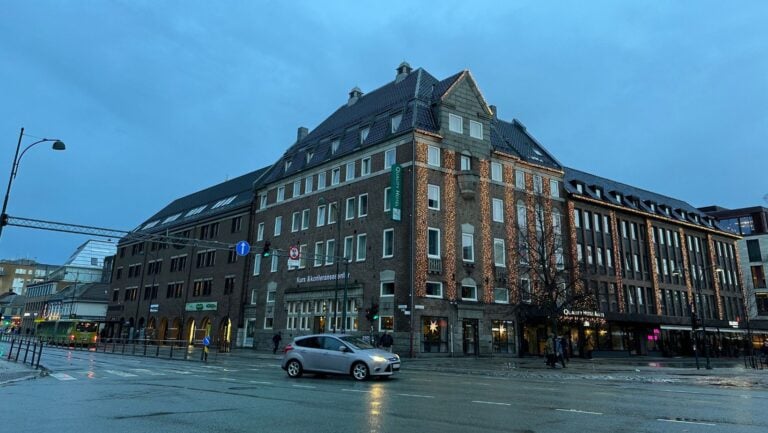In an international context, Norway is a relatively safe country on the roads. But people do still die from road traffic accidents every year. Here’s the facts and figures.
It’s that time of year when I just don’t go outside unless I absolutely have to. Not because of the temperature, though. In fact, we’ve recently had temperatures of -14C for two weeks and life has gone about pretty much as normal.

So, if it’s not the cold temperature, what’s the problem? Well, in the last few days, the temperature has “soared” to around freezing point. Coupled with severe rainfall, that has led to a major mess all over Trondheim. Ice!
Yesterday, my flight back to Trondheim was delayed by several hours as the airport closed to deal with the sudden ice on the runway. Such weather also creates major problems on the roads. I have never liked walking on a pavement alongside a road in such conditions.
RTAs in Norway
This got me wondering about road traffic accidents (RTA) in Norway. At the time of writing, I’ve never seen an RTA in Norway. I have back in England, but that’s a whole different story.
I knew that Norway once ranked as having the world’s safest roads among the 40 countries that are members of the International Transport Forum (ITF).

But to dig further into the details, I turned to Statistics Norway (SSB).
Deaths on the roads in Norway
The latest figures from SSB show that 116 people died in RTAs during 2022, with a further 578 people severely injured. Deaths were a little higher than the 5-year average of 101, while the numbers of severely injured were similar (588).
The majority of deaths and severe injuries are caused by head-on accidents and from a single car ending up off the road.
On average, 77% of those who die are male, and 23% are female. Of the severely injured, 65% are male, and 35% are female. Almost two-thirds of those killed are over the age of 45.
We tend to think of drivers in road accidents, but there’s a range of people involved, of course. Of the 101 deaths, 48 are vehicle drivers and 13 passengers. 18 are drivers or passengers on motorcycles or mopeds. Cyclists, pedestrians, and persons sledging account for 17 deaths, with 5 categorised as ‘other.’ As a reminder, these are average figures over the last five years.

Of those severely injured, 33% are drivers and 14% passengers. 24% are motorcycle/moped drivers and passengers. Cyclists, pedestrians, and persons sledging also account for 24%.
Long-term road safety trends
From 2000 to 2018, the number of annual road-related deaths fell by 68%. That’s an even more impressive accomplishment when you consider the increase in Norway’s population during the same time period.
A study from the Norwegian Institute of Transport Research suggests two clear contributing factors behind the trend: the increasing market penetration of safety features on new cars, and the reduction in average speed on Norwegian roads.
Overall responsibility for the organisation of road safety in Norway belongs to the Norwegian Public Roads Administration (NPRA), but they're not the only ones involved.
NPRA leads a broad collaborative approach, which also involves the Police, public health authorities, education administrations, and NGOs. Local and regional government also have roles.

